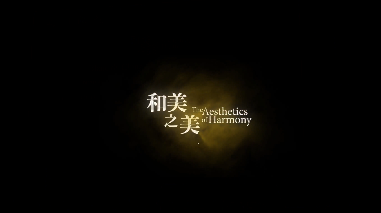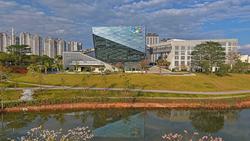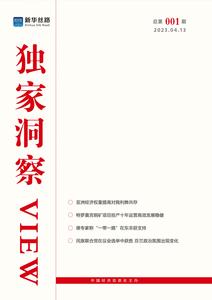
Renowned all over the world, Salawusu is the source of the ancient civilization of Ordos and a shining cultural symbol of it.
We will remain shocked by her dignity and mystery once we set our foot in Salawusu today.
In the 1920s, Sang Zhihua, a French Catholic priest and geological palaeontologist, together with De Rijin and others, discovered an upper-left lateral incisor of Homo sapiens in late Palaeolithic Age in Yangsigou Bay, which is located in Salawusu River Basin in Uxin Banner. Since then, a sensational relics treasure of the Palaeolithic culture was revealed before peole of the world. For decades, Chinese and foreign archaeologists have found a large number of human fossils in Salawusu River Basin, which are of great value and significance to the study in development progress of human civilization. As part of the most typical and important cultural relics of Hetao Culture, Salawusu received the world's attention. In 2001, Salawusu Cultural Relic was declared by the State Council to have been included in the 5th batch of national key units for cultural relics protection.
Salawusu River is one section of the famous Wuding River that originates in the northern foot of Baiyushan Mountain in Shannxi, and returns there after taking a turn in Mu Us Desert in Ordos. Wuding River is known as Hongliu River in Shaanxi and the Ordos section it flows through is named Salawusu locally, meaning "yellow water” in Mongolian. In the poem Journey to Longxi by Chen Tao in the Tang Dynasty, there are two famous stances that read: “What a pity for those who died along the Wuding River, and how eagerly their lovers dream of their safe return.” Thus, Wuding River earned its fame. Standing on a ridge by the river and then taking a broad view, Salawusu River is meandering, and along its bends there are always thick forests and picturesque pastoral life. At the bottom of a valley 60 or 70 meters deep, numerous birds, flowers, cranes and fish can be seen. Bathing in the spring breeze, Salawusu appears younger and shows greater vitality. Shuang Yun, the director of the Administrative Committee in Salawusu Cultural Tourism Development Zone, said: “Salawusu River flows here and formed the Qingshuigou Bay, Dishaogou Bay, Yangsigou Bay and other eight river bays, thus constituting the Salawusu Cultural Relic Area. Now, it’s also a national geopark.” Pointing to a stratigraphic section on a ridge, Shuang added: “Recently, some teachers and students from Beijing Normal University are conducting their archaeological research here."
Dishougou Bay is located in the southern tip of Salawusu Valley, where lots of cultural relics have been unearthed, including the famous woolly rhinoceros fossil. Once upon a time an ancient commercial road went by here. Caravans who went through Jingbian, Yulin and Yanchi, were often blocked when the river surged. Then people dug an underground channel which whistles when the water flows down, hence the bay’s name. Nowadays, this underground passage has become one of the most important landscapes in Salawusu, and visitors can pass through this channel if the water is little, so it is known as “Water Curtain Cave".
On Caopi Beach in Dishaogou Bay, we ran into Bai Shengwang, an elderly shepherd. Before his ancestors settled in Salawusu, Bai was once a native of Yulin in Shaanxi. Now his three sons went out from the bay, but he and his wife still live in Salawusu, leading a self-sufficient life by farming and feeding sheep. Bai pointed to a cliff on the western side and said: "Over there! I dug up one lower tooth fork (mandible) of Hetao people with my hands.” Through conversation, we learned that this elderly man once conducted archaeological excavations in the bays with famous archaeologists Jia Lanpo and Pei Wenzhong, when he was young. “That man was so talkative,” said the elderly man when telling us his impression on Jia Lanpo. For decades, Salawusu villagers like Bai Shengwang relentlessly explored the land for generations with the archaeologists, and some of them even became local amateur experts. There were also some villagers who spontaneously dug out lots of fossils and stones, however, due to lack of records about the exact locations, their archaeological value was thus greatly lowered. Undoubtedly, they have made great contributions to Salawusu’s archaeological exploration.
From ancient times, green was an unchanged background in Salawusu. “After the policy of graze prohibition, more trees are growing on the ridges than ever. As the number of travelers has been rising over the past few years, more rubbish was left. I gathered and burned them once for a while," Bai Shengwang, who never abandons his homeland in Salawusu, protects his living place by his own way. It is the villagers’ spontaneous protection of Salawusu that sustains its elegancy until today. So, it’s not difficult for us to understand why the land created Yin Yuzhen, Sheng Wanzhong and other national sand-control models.
Yangsigou Bay in the central part of Salawusu is the famous site where Sang Zhihua, De Rijin and others once discovered the fossils of some upper incisors of ancient Hetao people. Led by a villager named Yang Nasu, we reached where the upper incisors were discovered. But it has been transformed into a fish pond by a family, and most part of the monument for the relic has sunk under water. We could not help but sigh: Salawusu’s ancient civilization is so close to our production and life today, and its marks can be seen in the fields, fish ponds, and everywhere around the houses. However, we also have to regretfully point out: the relics site that the fish pond submerged is the very first place for Salawusu’s archaeological excavations. It is very likely that there are many other cultural relics here.
Salawusu River not only bred the ancient civilization, but also nourished the land and the people along it. The party and local government in Uxin have proposed to integrate ecology, culture, tourism and agriculture to build a tourist area that features “one river and three parks”, where Salawusu River serves as the axis. In the upstream, Salawusu National Archaeological Relic Park is being built on the Salawusu cultural relics; in the midstream, Salawusu National Wetland Park is being built mainly on the basis of the Batu Bay Reservoir; and in a valley 28 km downstream, Salawusu Leisure Health Fine Agricultural Manor is being built. Salawusu will gather new energy and offer more benefits to people along its banks. On December 22, 2013, the Salawusu National Archaeological Park Project was approved by National Development & Reform Commission; and on February 17, 2014, it was listed in the second batch of national archaeological relics park projects. Now the surveying and mapping work at 32 construction sites has been completed, and Huanhe Road, the museum and other projects are advancing steadily. At the same time, Uxin Banner has filed its application for listing its Salawusu Cultural Relics as World Heritage. 20 years ago, Shuangyun, director of Administrative Committee of Salawusu Cultural Tourism Development Zone, started his work in villages and the experience here left him deep affections for the area and great confidence in its future development. "All the development and construction in Salawusu will be carried out under the guidance of a series of institutional documents such as the Salawusu Relics Protection Plan. Our idea of development is to respect nature, culture and people's livelihood.”
The natural landscape of Salawusu comprises one river and eight bays, which are endowed with rich cultural relics. It is an important, realistic subject to develop Salawusu into a cultural resort and to effectively deal with the relationship between development and protection.
However, in Salawusu‘s protection and development, there is an unavoidable problem, that is, part of Salawusu relics area is on the border of Uxin and Etuokeqian. Now, there is an entrance respectively from Uxin Banner and Etuokeqian Banner to Salawusu cultural relics, and the sign on the gate of the Uxin side reads "Hetao People Relics”, and that of the Etuokeqian side reads "Ordos Desert Grand Canyon Tourism Area”. Apparently, Salawusu is very important for both sides. Historically, boundary problems often generate others: the upper reaches of the relics area in Etuokeqian Banner is the Dagouwan Reservoir. When the reservoir releases its water, some bridges and roads will be destroyed; the water runs through the canal from ancient times, and if a family blocks the canal to store some water, the others cannot irrigate their fields; as there are two passages where people can access the Salawusu Relics Area, lots of problems have arose in the management of the scenic area. A real case in point is that, the forestry police in Etuokeqian detained a villager named Liu Zhongcheng for he cut down some trees in his field to build a new house. As Liu later got released after Uxin Banner’s coordination, he wondered: my family had lived here for generations, how come it now belongs to Etuokeqian Banner? However, there is a hotel called Gao’s Yard in Salawusu that provides accommodation for tourists and it is owned by Chaolemengerile from Etuokeqian. The owner’s family has lived in Salawusu for six generations.
Salawusu Cultural Relics belongs to Uxin Banner and Etuokeqian Banner, but rather belongs to Ordos at a higher level. From Ordos’ perspective, the unified management is perhaps the best way to resolve contradictions and improve administration here.
Salawusu has been chanting a time-honored ode to civilization from ancient times. Today, by welcoming and blending with Salawusu and modern civilization, it should be more melodious and magnificent.











